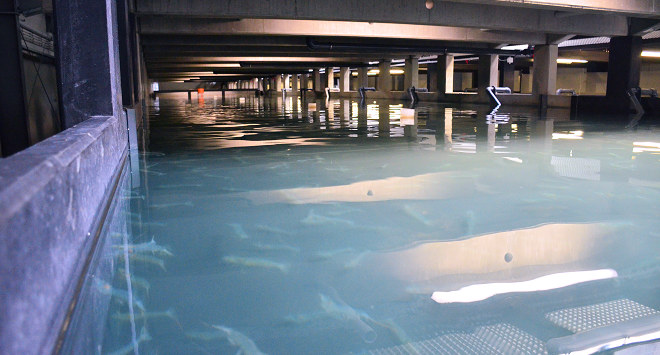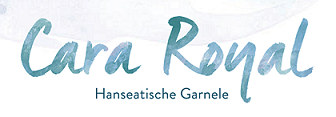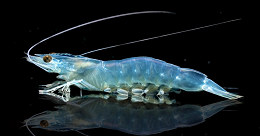Green aqua farming Grevesmühlen

Shrimp Farm Grevesmühlen GmbH & Co. KG, Am Baarssee 5, D-23936 Grevesmühlen, Germany.
Recirculating aquaculture systems (RAS) for holding and growing marine species have been used by fisheries researchers for more than three decades. Attempts to advance these systems to commercial scale food fish production have increased dramatically in the last decade. The renewed interest in recirculating systems is due to their perceived advantages, including greatly reduced land and water requirements, a high degree of environmental control allowing year-round growth at optimum rates and the feasibility of locating in close proximity to prime markets. This essay demonstrates the evolution of the RAS technique, which allows now a viable production of marine shrimps in the countryside in Germany.
The shrimp farm Grevesmühlen was established in 2013, and ready to operate after about one year construction period in 2014.
Design and construction was supervised from the service provider and consultancy (www.greenaquafarming.de)
GREEN AQUA FARMING GmbH & Co which is located in Wismar, Germany. GREEN AQUA FARMING is, among others, specialized in planning and operational support of aquaculture facilities.


The company sells their products with the tag "Cara Royal".
The production site of the farm facility was built inside of an isolated construction with a size of about 1.300 sqm and a total water volume of 400 cbm of water. The water management is based on full recirculation technique (RAS). The volume allows production of about 500.000 shrimps at a time. From larvae to market size (25-30g) about 6 months are required under the given farm conditions. The farm aims to produce about 15t of Whiteleg Shrimp per year. Since the farm facility was considered as a site with pilot character and as a demonstration farm for potential investors, two different construction styles were applied for the raceways. Some tanks were made with Ultralith, a special concrete which does not need any metal framework, and the other tanks were made out of Polyethylene boards.
The species Litopenaeus vannamei
The whiteleg shrimp, Litopenaeus vannamei (formerly Penaeus vannamei) also called Pacific white shrimp, is an eastern Pacific Ocean shrimp commonly caught or farmed for food. It is a marine crustacean belonging to the order Decapoda and the family Penaeidae. The body is translucent and often has a bluish-green hue due to the presence of pigmented chromatophores (molecules evolved to collect/reflect light). Litopenaeus vannamei can reach 23cm in length and is native to warm eastern Pacific waters ranging from Sonora, Mexico to Tumbes in northern. Its preferred habitat ranges from muddy bottoms of the shoreline down to depths of 72 m. The anatomy and life history of L. vannamei are similar to other members of the family Penaeidae. Weight at first maturity ranges from 20 g for males and 28 g for females, and is usually obtained between six and seven months of age. Female L. vannamei, weighing 30 to 45 g, spawn 100,000 to 250,000 eggs that are approximately 0.22 mm in diameter. Hatching occurs approximately 12-16 hours after fertilization, depending upon temperature. The growth and survival of L. vannamei postlarvae is strongly dependent on temperature and salinity. Survival and growth coincide best at around 28-30˚C and 33 to 40 ppt. Survival of juveniles is severely compromised at low salinities and high temperatures.
Advantages of L. vannamei for RAS production
The artificial reproduction of the species has become a routine procedure and larvae are available year around from specialized hatcheries, a matter of fact which is important for facilities which operate independently from environmental conditions. Hatcheries in the USA who are providing Whiteleg shrimp larvae for ongrowing farms are certified for more than six generations as SPF (specific pathogen free stocks) and can provide healthy larval stages. Larval stages of L. vannamei are in general robust with low mortality and can be quickly adapted to lower salinity. The species is fast growing (1-3g/week) and allows relatively high stocking densities which facilitates economical operation of the facility but does not harm the welfare of the individuals.